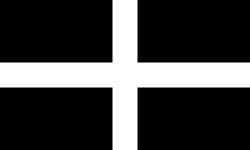This is a list of flags which are entirely or largely black.
This is a list of flags which are entirely or largely black.







In Ali Soufan's book The Black Banners, he explains the title by noting that quotes from various Hadiths regarding "Black Banners" of a "new army" taking over Khorasan have some kind of prophetic significance with many modern adherents of extremist jihadism. He notes that it is "not a coincidence" that Osama bin Laden made al-Qaeda's flag black. Soufan also notes that there is debate about whether the prophet Mohammed actually spoke some of the quoted Hadiths (such as one attributed to Abu Hurairah). He also notes that Sheikh Salman al-Ouda has said the Black Banner hadiths are not able to be authenticated. [4]




The black flag is a racing flag used to signal a driver's disqualification. In sail racing, when the black flag is displayed with the preparatory signal, a boat that is over the starting line in the minute before the starting signal is immediately disqualified without a hearing. In some forms of racing, a black flag is used to disqualify competitors or indicate some other penalty (such as a forced pit stop in NASCAR).
In The Silmarillion and other Middle-earth writings of J.R.R. Tolkien, the banner of the evil overlord Morgoth is described as being entirely black with no insignia. In The Lord of the Rings set several thousand years subsequently, the good Dúnedain bore a flag with solid black background as their royal standard, charged in silver with depictions of heirlooms from the founding of Gondor and Arnor including the Palantiri and the White Tree.